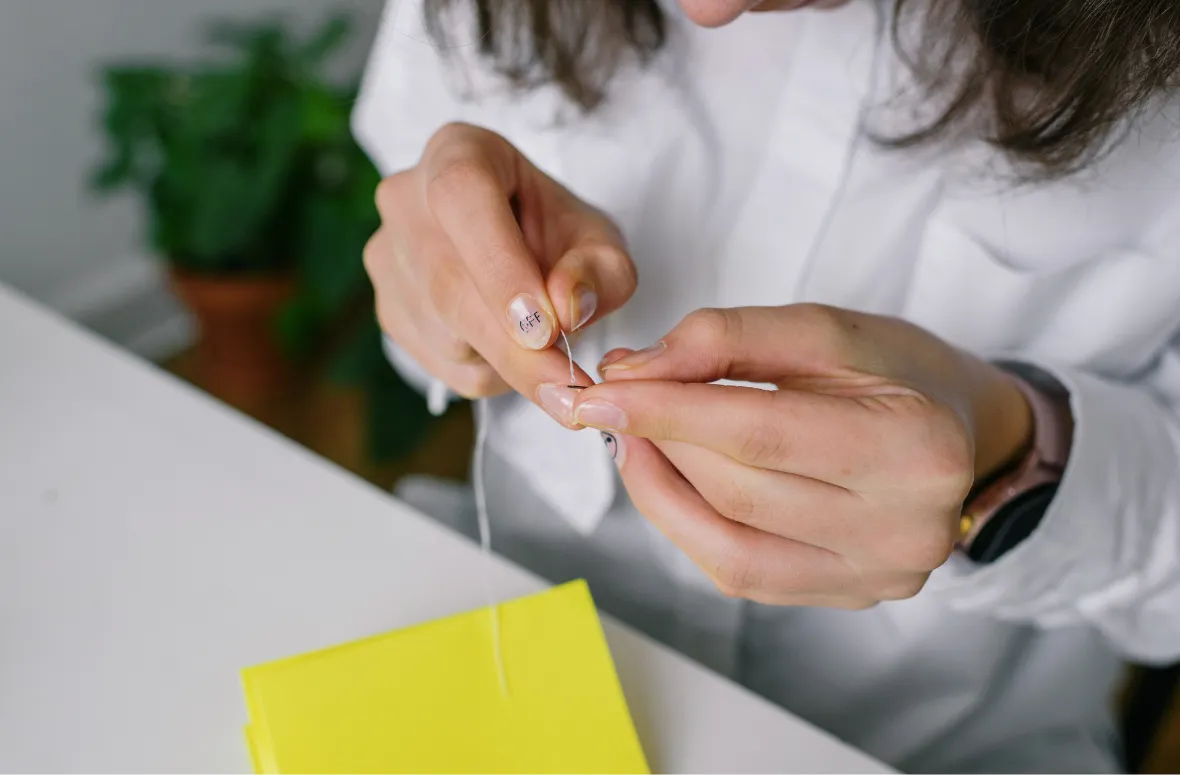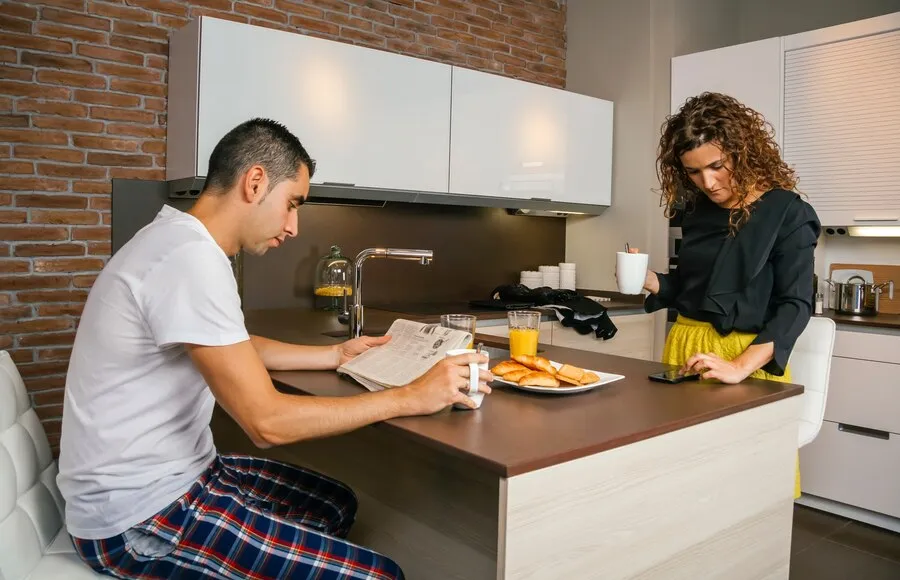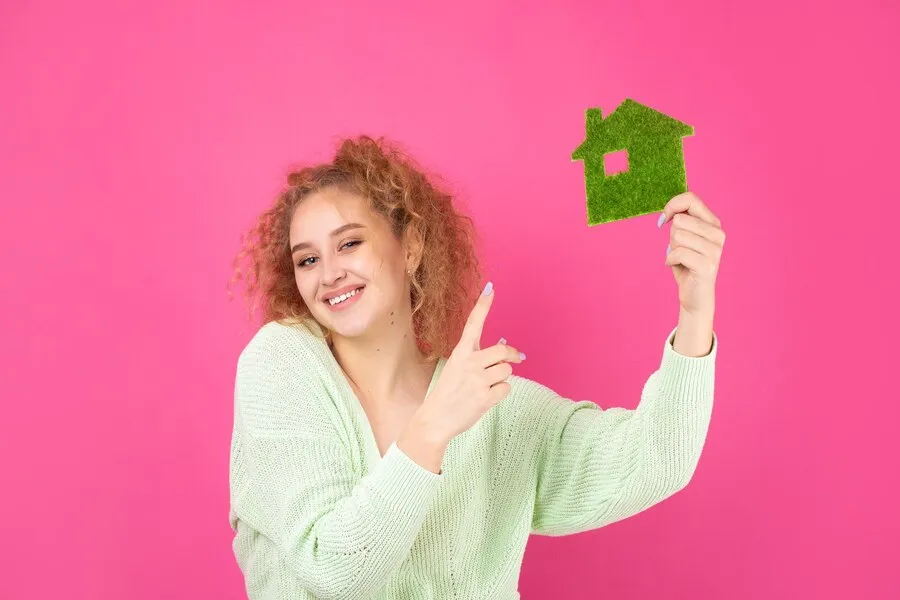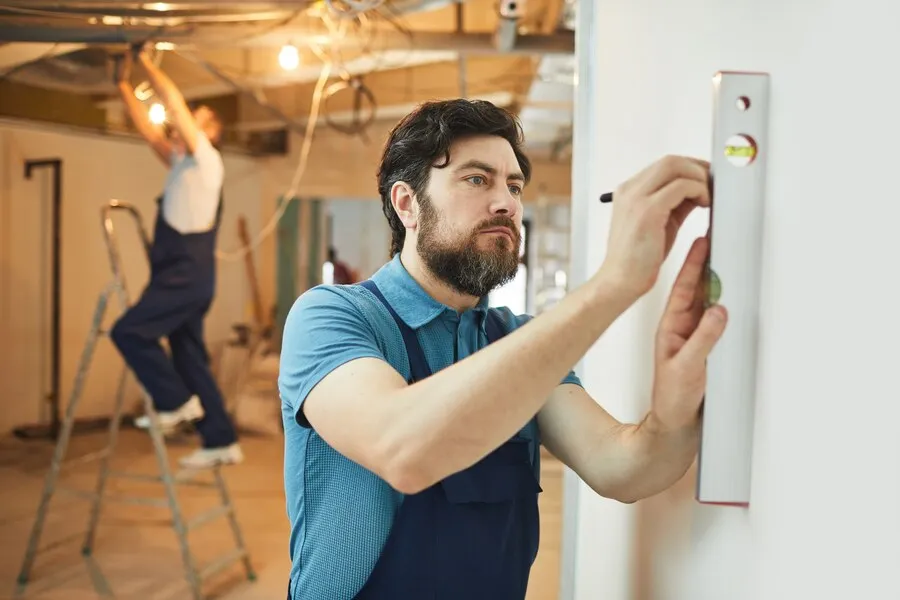Table of Contents
Threading a Needle: The Ultimate Guide for Beginners
Threading a needle is one of those simple tasks that every sewer or crafter needs to master. Whether you’re a complete beginner or have used a needle once or twice, threading it can be frustrating. The eye of the needle is tiny. But don’t be concerned – we’ve got you covered! This guide will educate you on easy ways to thread a needle, how to tie a knot, and how to handle common threading challenges.
What’s the easiest way to thread a needle?
Threading a needle doesn’t have to be a chore! Here’s a simple and effective way to get the job done in just a few steps:
- Cut the end of your thread: Start by using a sharp pair of scissors to cut a clean end on your thread. This helps prevent fraying and ensures you have a smooth thread to work with.
- Hold the needle steady: Pinch the needle between your thumb and forefinger with the eye facing you. The front of the needle is generally easier to use.
- Thread the Needle: Now, pinch the thread and slowly push it through the needle’s eye. If you’re struggling, try moistening the thread with a little lick to make it easier to handle.
- Pull the Thread: Once the thread has passed through the eye, pull it gently until you have the right length for your sewing project. And that’s it! You’re ready to go.
A Simple Hack for Threading a Needle
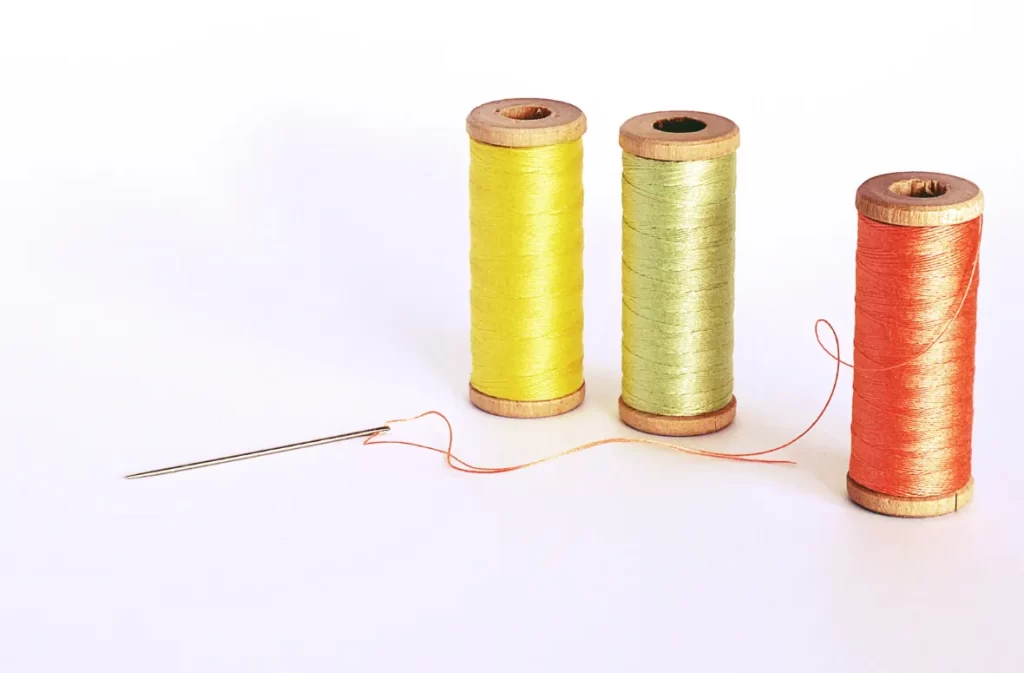
Struggling with threading your needle? Don’t worry! There’s a simple hack you can use: the needle threader.
A needle threader is a tiny tool that helps you thread a needle in no time. Here’s how to use it:
- Insert the threader: Progress the needle threader within the needle’s eye.
- Insert the thread: Place your thread through the little loop on the threader.
- Pull the Threader Back: Pull the threader back through the eye, and the thread will come along with it. It’s that simple!
This is a perfect hack if you’re new to sewing or you’re dealing with a needle that has a tiny eye.
Read Also: Can I know what’s best for you ever received usage?
How to Knot the End of the Thread
Now that your needle is threaded, it’s time to secure the thread. Tying a knot at the end is important to ensure the thread doesn’t slip out while you sew. Here’s a simple trick to pull it off:
- Pinch the thread’s end; hold it between your thumb and forefinger.
- Create a loop: Form a small loop at the very end of the thread.
- Lock a sturdy knot by twisting the thread within the loop. Thread the end through once more. Pull tight to secure. This creates a robust fastening that won’t easily come undone.
For extra security, you can double-knot the thread by repeating the steps.
How to Fit a Thread through a Little Needle’s Eye
Threading a needle with a small eye can be tricky, but with a few tips, you’ll get the hang of it:
- Trim the End Neatly: A frayed thread won’t fit through a small eye. Use sharp scissors to create a clean cut at the end of the thread.
- Lick the thread: Moisten the thread to prevent fraying. It will slide through the needle’s eye more easily.
- Use a Needle Threader: If the needle’s eye is very small, use a needle threader. It will save you time and effort, especially with thin threads.
- Pinch the thread between your thumb and forefinger to steady it. Then, push it through the eye.
Do you thread a needle from the front or the back?
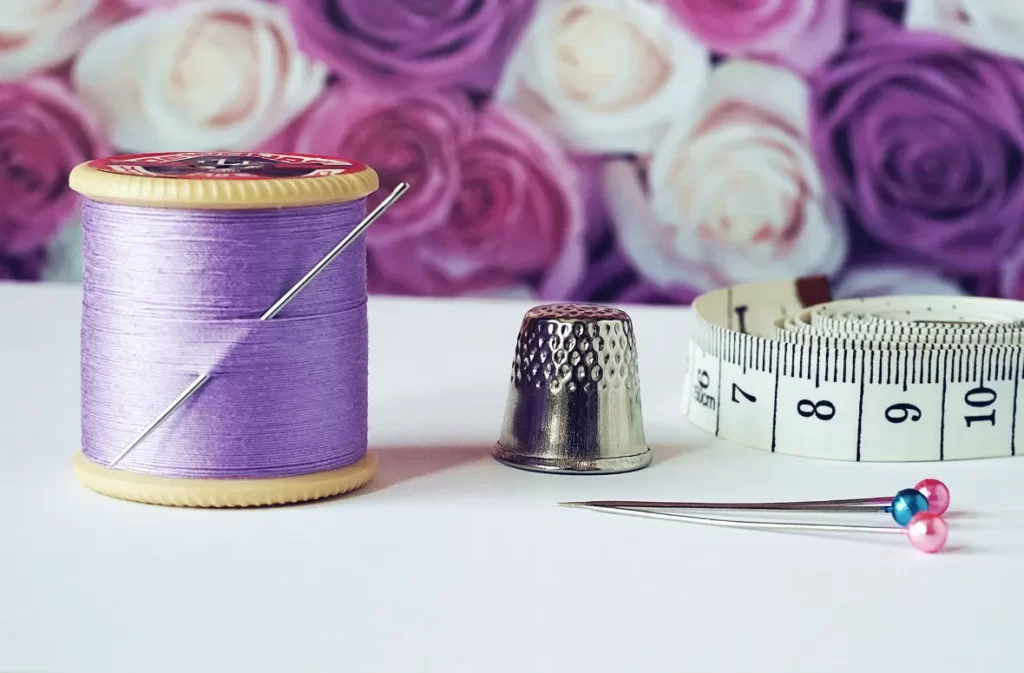
This is a usual question that frequently mystifies starters. The best way to thread a needle is from the front. Keep the needle holding the eye observing at you. Insert the thread through the front of the eye. This will keep the thread flat and even while you stitch.
Also Read: Eduard Soriano Pínter: Graphic Designer in Valencia, Spain
How to Knot the End of the Thread for Extra Security
To prevent your thread from slipping while you sew, always tie a small knot at the end. Here is how to do it:
- Make a small loop: Bend the finish of the thread. Then, form a pint-sized loop.
- Twist and Pull: Twist the thread inside the loop and pass the end through to form a knot.
- Tighten the knot: Wrench the knot strain to secure the thread.
A double knot is perfect if you’re worried about it coming loose!
Why is threading a needle so hard?
If you find it hard to thread a needle, you’re not alone. The process can feel difficult for several reasons:
- Frayed Thread Ends: If the thread end is frayed, it becomes difficult to thread it through the eye.
- Small Needle Eyes: A smaller eye makes it harder to thread, especially with thick thread.
- Poor lighting: Not enough light can make it hard to see both the thread and the needle.
- Shaky Hands: If your hands are unsteady, it can make it harder to align the thread with the eye of the needle.
Luckily, there are simple solutions. Use a needle threader, trim the thread, or use larger needles with wider eyes.
The Tool That Helps You Thread a Needle
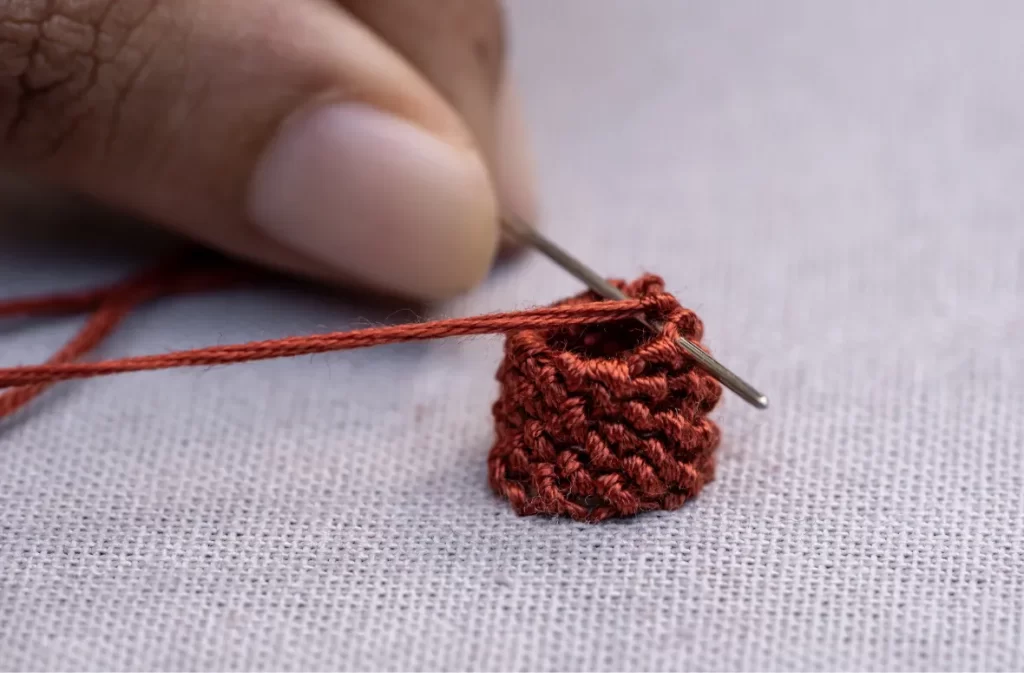
A needle threader is a little but very valuable tool. It simplifies the threading process. It’s for those times when the needle’s eye seems too small. Or when your hands aren’t steady enough to thread it. Here is how it works:
- Place the threader into the needle’s eye.
- Place the thread into the wire loop on the threader.
- Pull the threader back through, and the thread will follow.
This simple tool is a game-changer for sewers of all skill levels!
Also Read: Can I not comb my hair? The Struggle You’ll Relate To!
How to Thread a Needle When You See It
If you are struggling to see the eye of the needle, try these tricks to make the process easier:
- Good Lighting: Ensure you’re in a well-lit area, as it’s essential for seeing the thread and needle clearly.
- Use a magnifying glass: If you need extra help, a magnifying glass can make the needle’s eye much easier to see.
- Needle Threader: Using a needle threader is an effective way to bypass the need to see the eye at all.
- Go for Larger Needles: Needles with a larger eye can be much easier to thread.
These tips make it easier for those who struggle with visibility or dexterity.
Threading and Sewing
Threading a needle may seem like a simple task, but it’s an essential skill for any sewer or crafter. By using these tips and tools like needle threaders, you can thread your needle easily. Then, you can start your sewing projects.

